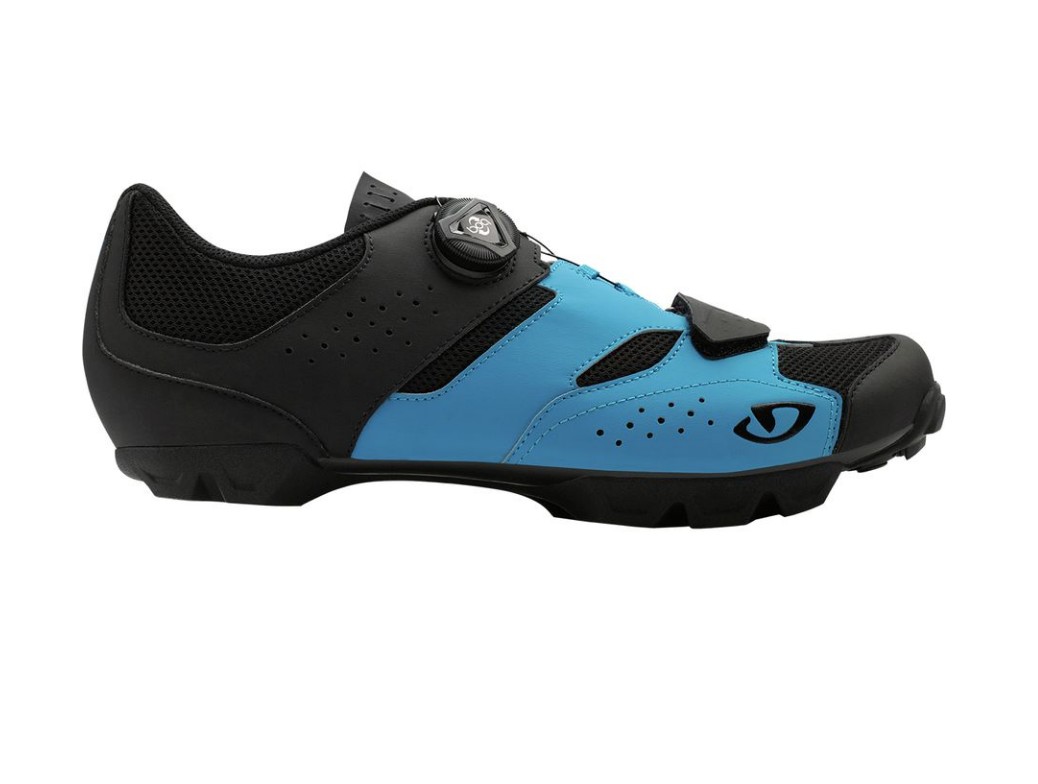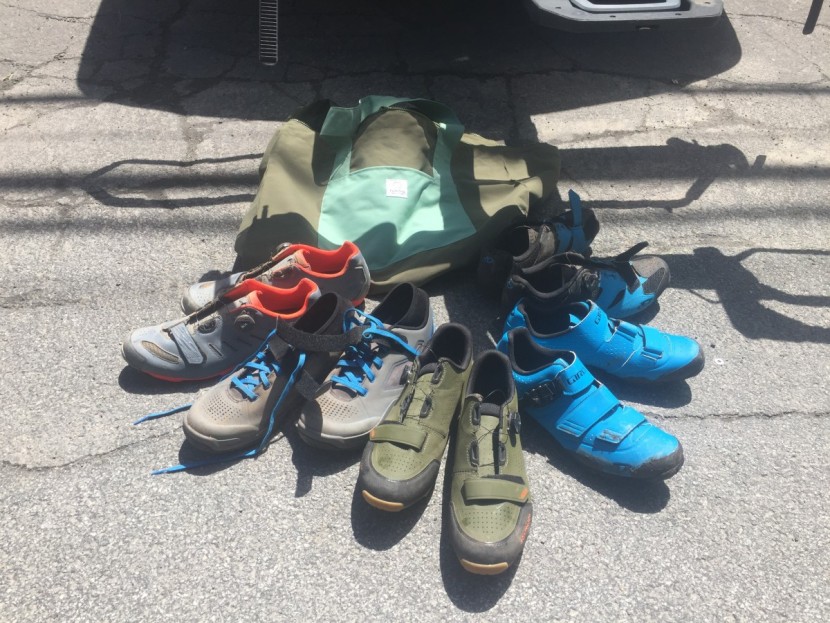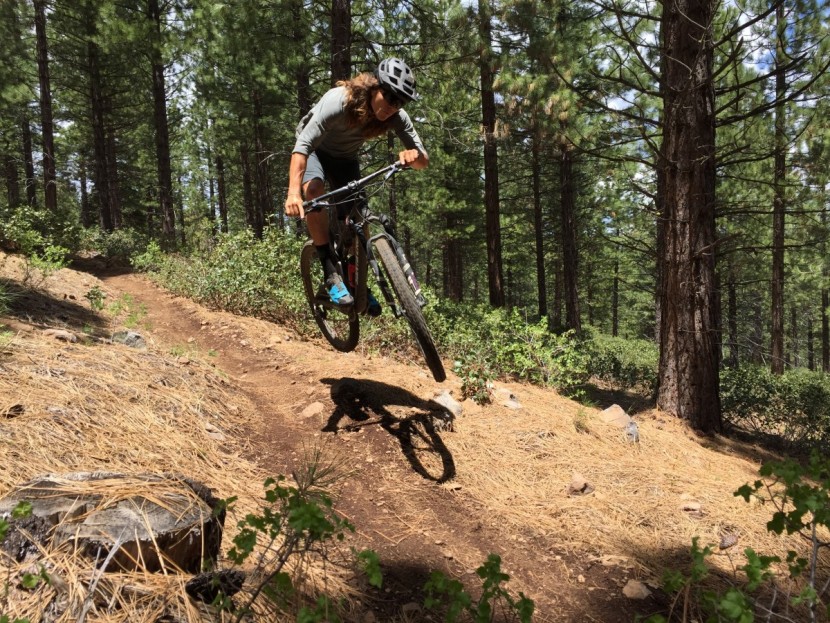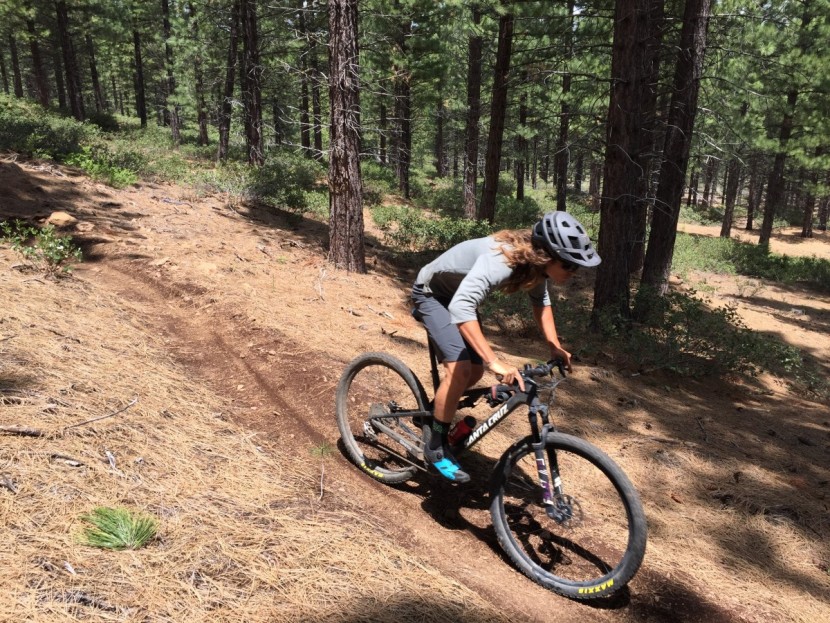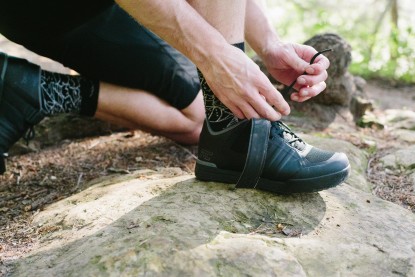Giro Cylinder Review
Our Verdict
Our Analysis and Test Results
The Cylinder is a purpose-built XC shoe with the performance and features that we have come to expect from Giro at a reasonable price. We found the Cylinder works fine with most clipless pedal styles but performs best with small platform pedals or those with no platform. We tested the Cylinder on all manner of rides, from quick laps in the backyard to long-distance gravel rides to gain an understanding of its key performance characteristics.
Power Transfer
The Giro Cylinder uses a nylon shank similar to its similarly priced all-mountain brother, the Giro Privateer R. The Boa dial system found on the Cylinder does provide a bit more security than the ratchet/velcro combo found on the Privateer, resulting in a noticeable, but not extremely significant increase in power transfer on the Cylinder. The Cylinder is not as stiff as XC shoes utilizing carbon shanks such as the Giro Empire VR90 or the Shimano S-Phyre XC9, making it a second choice for those looking to race XC competitively.
Comfort
With no adjustable arch support, a fairly basic footbed, and a narrow fit, the Cylinder didn't go about impressing reviewers with its comfort. As a result of these design choices, as well as a tendency for the Boa dial system to cut off circulation on the outer toes, the Giro Cylinder received one of the lowest comfort scores in our test.
Giro clearly intended to make a budget shoe designed to excel at cross country riding, shaving comfort features like footbeds and padding in favor of counting grams. The end result is an extremely light shoe that gives no quarter when it comes to comfort. We would not recommend this shoe if you are looking for something you can ride in all day, nor if you intend to embark on hike-a-bikes or rougher trails. The ventilation method of the Cylinder works well to keep the feet cool but also resulted in moisture being let into the shoe when riding through water or hiking across snow/mud.
Traction and Walkability
The Cylinder has roughly the same traction and walkability as its equivalent priced brethren: the Bontrager Foray and the Giro Privateer R. This traction could be increased if one was to utilize the option to add metal toe spikes to the Cylinders, which are available for purchase at an additional cost from Giro.
Unfortunately, the comfort of the Cylinder comes into play in reducing the overall walkability of this shoe. When hiking or pedaling for a significant amount of time in this shoe, there is a tendency for circulation to be cut off on the outside of the foot, resulting in loss of feeling and frustration. The solution to this issue was to loosen the boa dial while hiking; however, we don't feel this should be necessary for any shoe that costs more than $100.
Weight
The Giro Cylinder did come in first in one metric on our test, weighing a mere 358g in size 45, we were more than impressed. This is roughly the same weight as the Giro Empire VR90, theSidi Trace 2, and the Shimano S-Phyre XC9, shoes that cost more than twice as much. That said, those more expensive competitors are also more comfortable and higher-performance.
If you are looking to race cross country or hunt KOMs without breaking the bank, the Giro Cylinder will make for a good choice thanks to their light weight and good power transfer.
Durability
Giro had cross country and gravel in mind when designing the Cylinder, neither of which typically include copious amounts of rough terrain or hiking. This design method resulted in a shoe better fit for rides where the shoes stay clipped into the pedals for the entirety rather than being exposed to hiking or dragging an inside foot around a steep corner. Throughout XC and gravel rides, the shoes held up well and would last for a while if used in this capacity; however, upon testing the shoes in all mountain conditions the uppers and sole began to show signs of wear. Exposure to creek crossings, riding through tight brush, and hiking up rocks and loose dirt made the Cylinders look months older than their actual age.
We did not manage to damage the Boa unit on the Cylinder during our test, providing some reassurance that its prominence does not guarantee failure; however, the Boa dial is easily replaced in case of damage.
Value
Dishing out more than one hundred dollars can feel like a lot for a shoe lacking in versatility; however, the Cylinder is not a bad value for those looking for a shoe that can take care of XC, gravel, road, and commuting miles while looking good. If you find yourself wearing knee pads on your rides, the Cylinder is not the shoe for you, with other similarly priced models being better suited for your needs.
Conclusion
The Giro Cylinder is a reasonably priced entry-level XC shoe with a narrow window of versatility, yet has solid elements of design and function from one of the most respected names in the industry. If you are after a sleek looking shoe to handle rides that primarily involve lycra, the Cylinder is a great choice. Those looking to be more competitive in racing or for more comfort and versatility should look towards the Giro Empire VR90.


